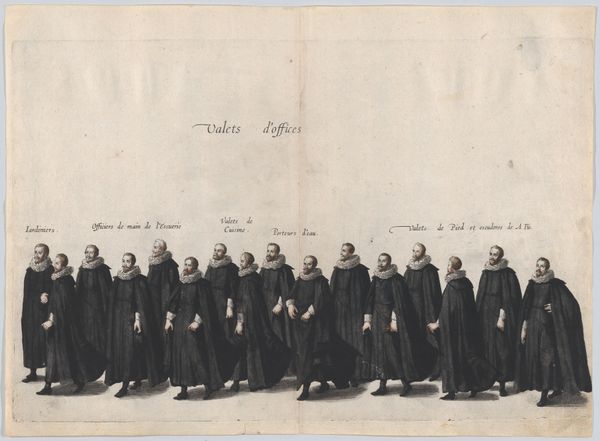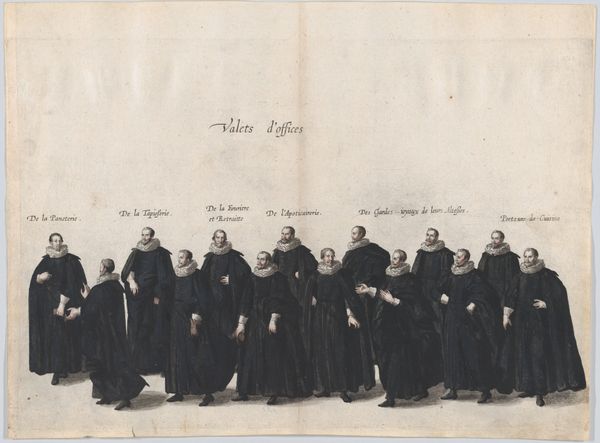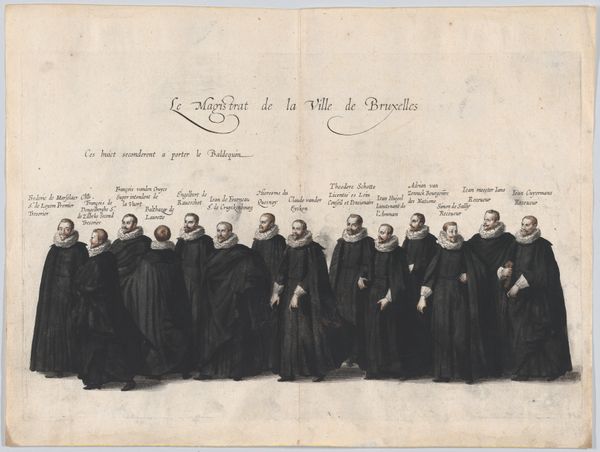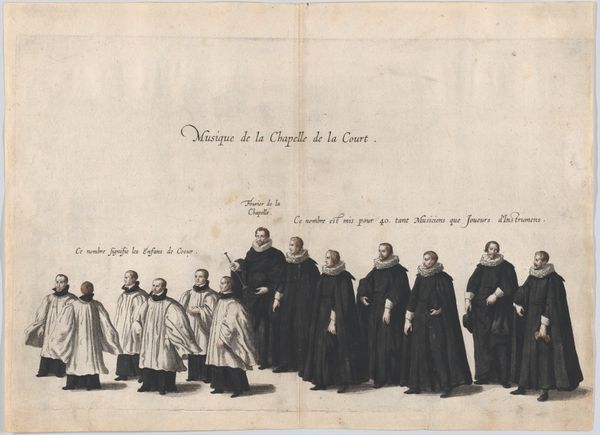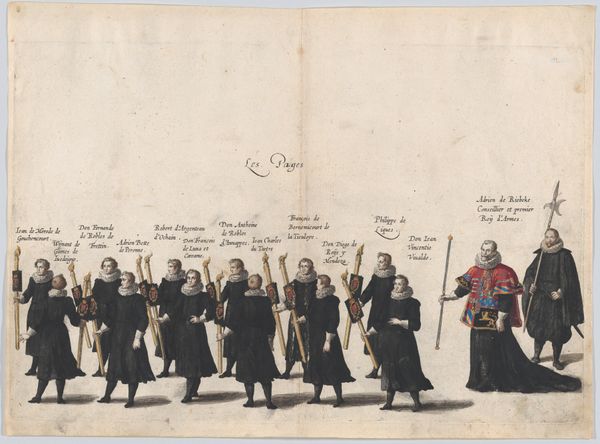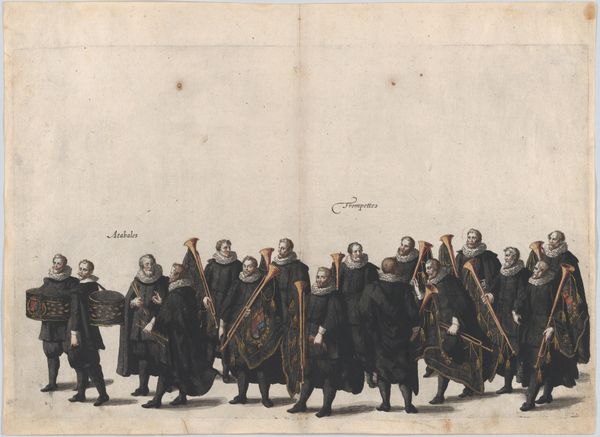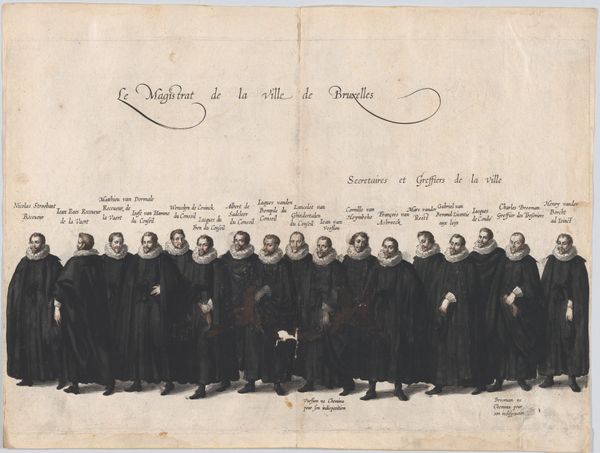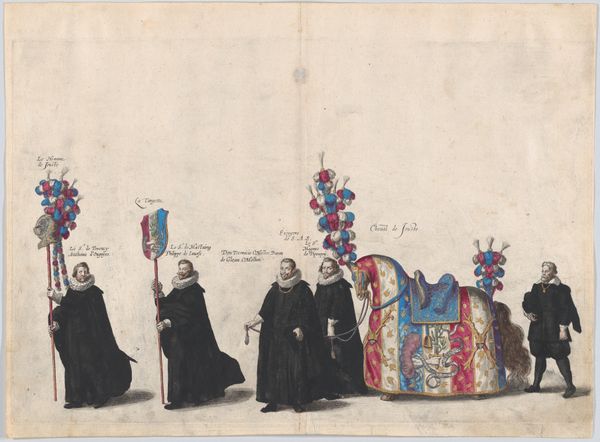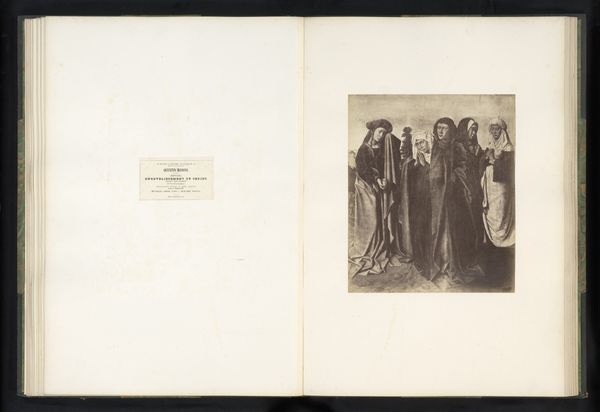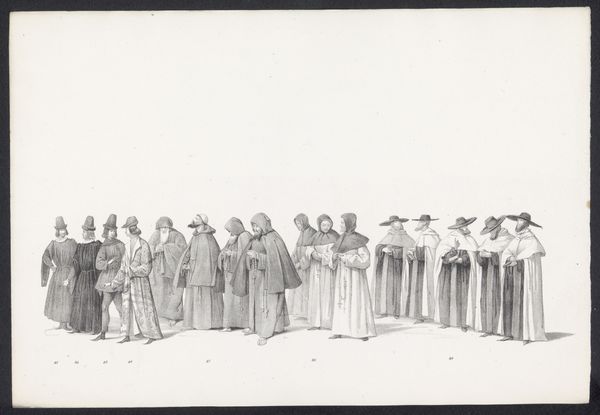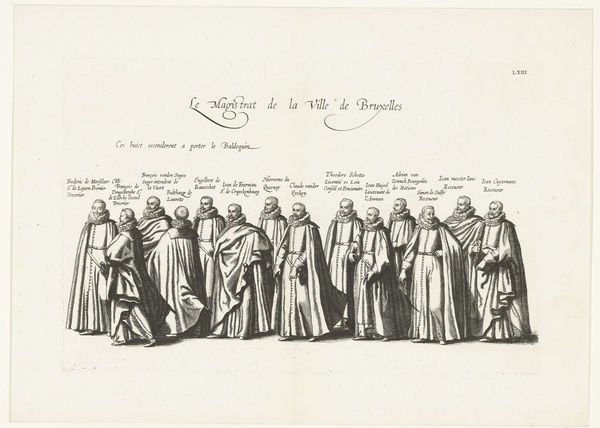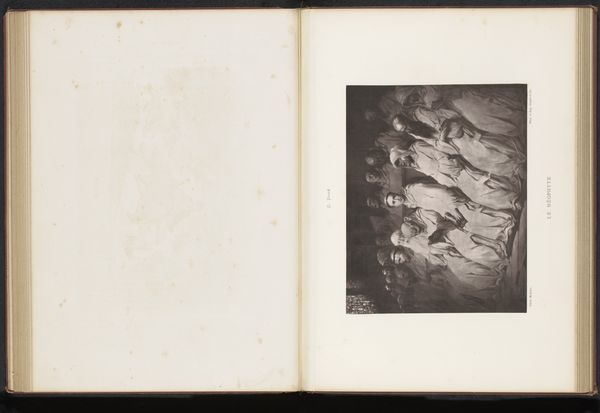
Plate 24: Gentlemen of the house marching in the funeral procession of Archduke Albert of Austria; from 'Pompa Funebris ... Alberti Pii' 1623
0:00
0:00
drawing, print, engraving
#
portrait
#
drawing
#
baroque
# print
#
group-portraits
#
engraving
Dimensions: Sheet: 11 3/16 × 15 3/8 in. (28.4 × 39 cm) Plate: 10 1/16 × 14 in. (25.6 × 35.6 cm)
Copyright: Public Domain
Editor: This engraving, "Plate 24: Gentlemen of the house marching in the funeral procession of Archduke Albert of Austria; from 'Pompa Funebris ... Alberti Pii'" was created by Cornelis Galle I in 1623. It depicts a somber gathering. I am struck by the contrast between the uniformity of the figures’ black cloaks and the individuality of their faces and the overall composition. What can you tell me about the formal elements at play? Curator: Indeed. Consider first the stark visual weight of the black robes, a repetitive geometric form against the stark background. This immediately establishes a sense of order and perhaps constraint, even within a chaotic context of mourning. Note how the engraver utilizes line, specifically varying the density and weight, to define both form and texture. See how the ruffs, rendered with meticulous detail, punctuate the darkness, adding a touch of ephemeral light and contrasting textures that frame the faces? The placement, their positions, their postures -- what do you think they signify? Editor: It feels like the positioning emphasizes hierarchy, both vertically in the ordering on the print itself, and horizontally with the varying stance of each individual. Do you think this focus on structure serves to distance the viewer from any sense of genuine emotion? Curator: Precisely. There’s a deliberate distancing through formal choices. This calculated arrangement prioritizes a representation of status and order, even amid grief. Consider, too, the effect of the textual elements, these labels seeming almost scientifically clinical. How do these identifiers function in contrast to the visual field? Editor: The labels almost dehumanize the figures, reducing them to mere components within the grand spectacle of state mourning. The artist emphasizes not emotional response, but social position within a strict hierarchy. Curator: And through that prioritization, Cornelis Galle I provides insight into the society that produced, and consumed, this image. This has given me cause to pause, to reflect on the interplay of loss and social order, and to reassess our understanding of early Baroque aesthetics and function. Editor: Thank you. This deeper formal analysis reveals so much about not only the piece but also about its historical and cultural context.
Comments
No comments
Be the first to comment and join the conversation on the ultimate creative platform.
